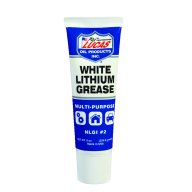I found that, at lower tunings, I would get inconsistent readings. Place the dial on a spot, take a reading, remove the dial and place it back in the same spot and I’d get a significantly different value. This didn’t happen with 10mil single-ply heads.
I also noticed that, as a drum head got old and pitted/stretched in the strike zone, the tension values were the same as when the head was new but the head would not be in tune with itself.
Caveat: I had only one drum dial (the Tama Tension Watch) and it could’ve been imprecise to begin with.
It's odd that the dial would read the same spot differently, regardless of the heads involved, but perhaps double-plies thwart the device's sensitivity in some way. I have no idea.
For me, achieving the proper feel from a head precedes the attainment of tone. If I don't approve of a drum's tactile response, its tone does little to sway me. I tune for feel first, then fine-tune to pinpoint tone. That's been my process since day one, and it's exactly how my instructor advocated I go about it. I recall with perfect clarity, at the age of eleven, adjusting my snare batter and reso to get a friendly feel from them. Each drummer processes feel uniquely. I know I'm there when I arrive. Then I adjust for tone.
There are types of heads I've sampled and completely written off because their feel repels me, sound be damned. I look at it this way. When it comes to drums, there are countless "acceptable" sounds. Calling one sound "right" and another "wrong" is completely impressionistic, bordering on irrational. The musicians with whom I play, and the audiences who hear us, are happy to entertain various drum sounds, but I'm the one who has to strike the instrument comfortably, sometimes for several hours straight, so feel sits atop my value system.
I will deviate from my feel platform for situational tunings. Example: I don't like a hard feel from my snare, nor do I want a mushy one, but I'll go to both extremes for select purposes, always returning to my ideal feel as soon as possible.


